Visit Croatia 2025
Get ready to fall in love with a country where the waters sparkle an unbelievable shade of blue, ancient cities tell tales of emperors and seafaring traders, and every sunset seems more magical than the last. If you’re looking to Visit Croatia in 2025, you’re in for an unforgettable journey. This gem of the Adriatic has something for every kind of traveler, from sun-worshippers and history buffs to adventure seekers and foodies. Let’s dive into why your next big trip should be to this incredible European destination!
Table of Contents
Why You’ll Love to Visit Croatia
Croatia is a land of stunning contrasts and breathtaking beauty. Imagine yourself wandering through ancient Roman ruins in the morning, swimming in crystal-clear Adriatic waters in the afternoon, and dining under the stars in a medieval town by night. That’s the kind of magic Croatia offers.
Here’s a little taste of what makes a Visit Croatia so special:
- Jaw-Dropping Coastline: With over a thousand islands, islets, and reefs, plus a long, indented mainland coast, Croatia’s beaches and sailing opportunities are world-class. Think pebble coves, hidden bays, and vibrant beach towns.
- Rich History & Culture: From Emperor Diocletian’s palace in Split to the perfectly preserved medieval walls of Dubrovnik (hello, King’s Landing fans!), history is alive and tangible here.
- Spectacular National Parks: Eight national parks, including the iconic Plitvice Lakes with its cascading waterfalls and Paklenica with its rugged canyons, offer incredible hiking, boating, and wildlife spotting.
- Delicious Food & Wine: Fresh seafood, locally produced olive oil, tasty cured meats, and surprisingly excellent wines – Croatian cuisine is a delightful discovery.
- Friendly People: Croatians are known for their hospitality and are generally warm and welcoming to visitors.
Things to Do in Croatia: Adventures for Everyone
No matter your travel style, a Visit Croatia itinerary can be packed with incredible experiences.
Iconic Landmarks You Can’t Miss
- Dubrovnik’s City Walls & Old Town: Walk the ancient walls for breathtaking views of the “Pearl of the Adriatic.” Get lost in the limestone-paved streets of the UNESCO-listed Old Town.
- Diocletian’s Palace in Split: Explore this sprawling 4th-century Roman palace, a living monument that forms the heart of modern-day Split.
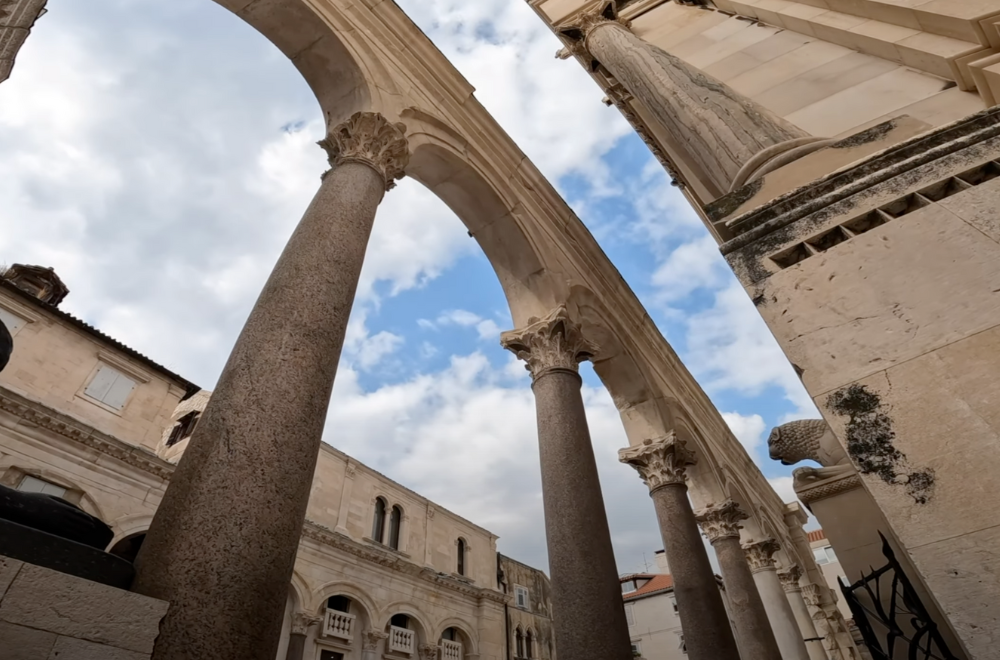
- Plitvice Lakes National Park: Marvel at the 16 terraced lakes connected by stunning waterfalls. Wooden walkways allow you to get up close to this natural wonder. Explore Plitvice Lakes National Park for ticket and tour information.
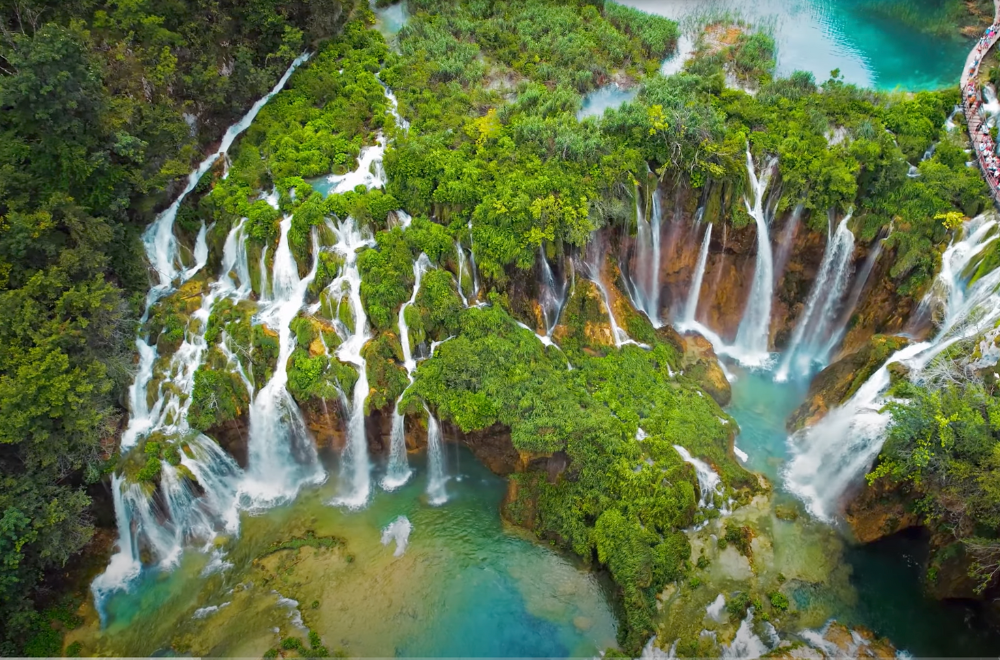
- Roman Amphitheatre in Pula: Discover one of the best-preserved Roman amphitheaters in the world, located in the Istrian city of Pula.

Hidden Gems & Unique Experiences
- Island Hopping in the Kornati Archipelago: Explore this nautical paradise of over 100 largely uninhabited islands and reefs – perfect for sailing and snorkeling.

- Truffle Hunting in Istria: Join a guided tour to hunt for delicious black and white truffles in the forests of the Istrian peninsula, followed by a tasty truffle-based meal.
- Visit the Sea Organ & Greeting to the Sun in Zadar: Experience these unique art installations on Zadar’s waterfront. The Sea Organ creates music from the waves, while the Greeting to the Sun puts on a dazzling light show at sunset.
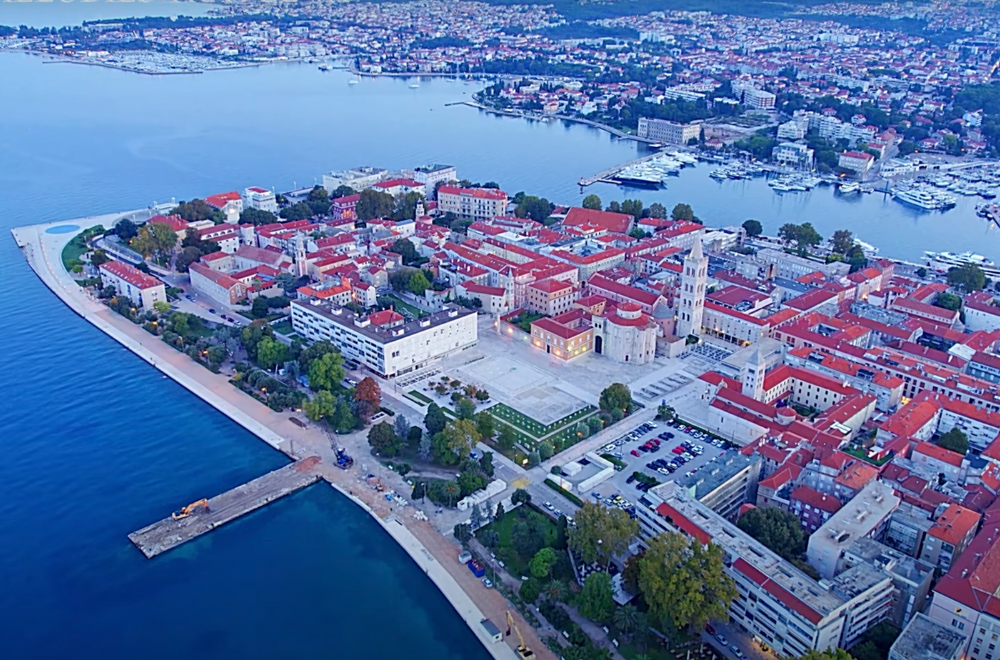
- Explore the Island of Vis: Less crowded than some other islands, Vis offers a more rugged, authentic charm, stunning beaches like Stiniva Cove, and a fascinating military history (Tito’s Cave).
Tours & Activities
- Hiking: Paklenica National Park offers fantastic trails for all levels. Biokovo Nature Park above the Makarska Riviera also has challenging hikes with rewarding views.
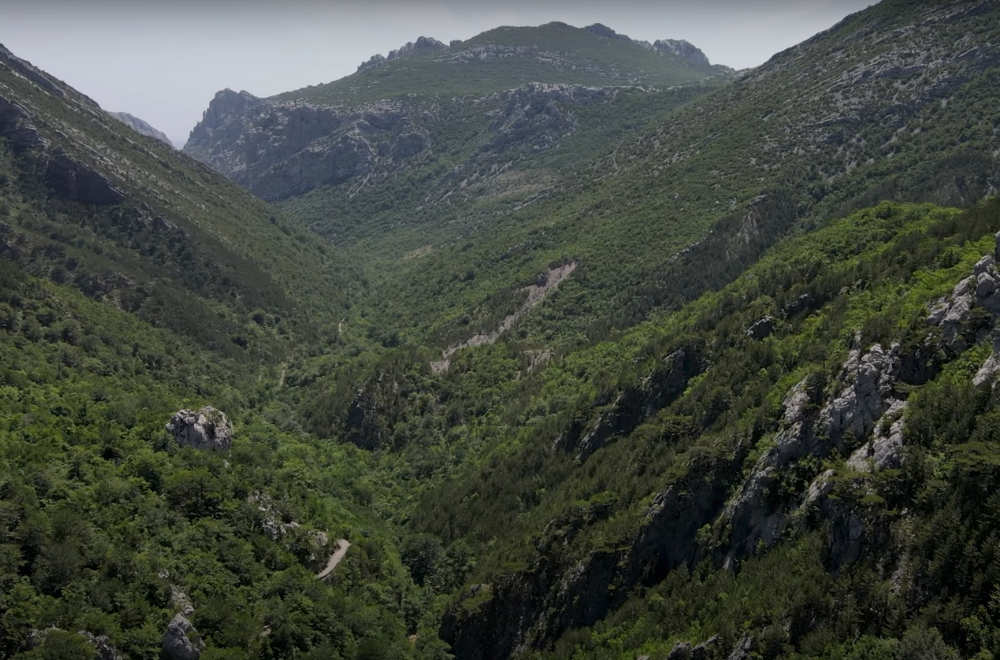
- Snorkeling & Diving: The clear Adriatic waters are perfect for exploring marine life. Popular spots include the Pakleni Islands near Hvar and various locations around Vis and Korčula.
- Museum Visits: Zagreb boasts a quirky array of museums, from the Museum of Broken Relationships to the Croatian Museum of Naïve Art.
- Cooking Classes: Learn to prepare local Dalmatian or Istrian dishes. A great way to immerse yourself in the food culture.
- Game of Thrones Tours: For fans of the show, tours in Dubrovnik and Split take you to iconic filming locations.
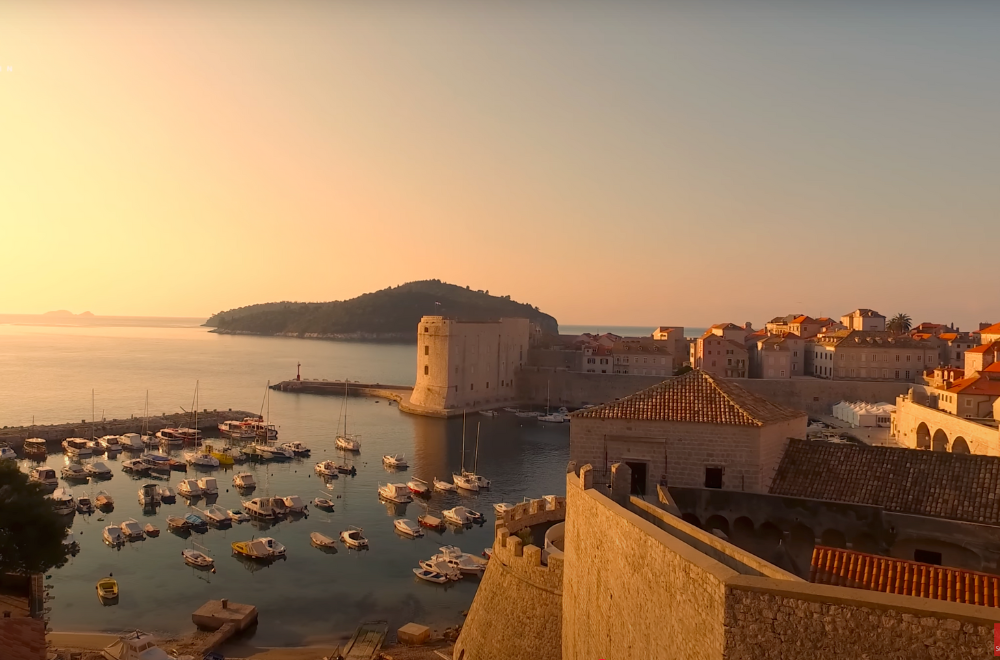
Where to Stay: Accommodation for Every Style
Finding the perfect place to rest your head is easy when you Visit Croatia.
- Luxury Hotels: Expect top-notch service and stunning views in places like Hotel Excelsior Dubrovnik, Hotel Lone in Rovinj, or Vestibul Palace in Split (located within Diocletian’s Palace).
- Pros: Amazing amenities, prime locations, excellent service.
- Cons: Can be pricey, especially in peak season.
- Boutique Hotels & Guesthouses (Sobe): Often family-run, these offer a more intimate and charming experience. Look for them in historic towns and on islands.
- Pros: Unique character, personalized service, good value.
- Cons: Fewer amenities than large hotels, may require booking further in advance.
- Apartments & Airbnb: Hugely popular, especially for families or longer stays. Offers flexibility and self-catering options.
- Pros: Space, kitchen facilities, often more affordable for groups.
- Cons: Service can vary, check-in might be less flexible.
- Hostels: Great for budget travelers and solo adventurers looking to meet others. Major cities like Zagreb, Split, and Dubrovnik have excellent modern hostels.
- Pros: Very affordable, social atmosphere.
- Cons: Can be noisy, less privacy.
- Resorts: Predominantly found along the coast, offering all-inclusive options and plenty of on-site activities, great for families.
- Pros: Convenient, lots of activities, often beachfront.
- Cons: Can feel isolated from local culture.
Neighborhood Tips:
- Dubrovnik: Staying within the Old Town is magical but can be crowded and expensive. The Ploče or Pile areas offer great views and are a short walk away. Lapad offers beaches and a more relaxed vibe.
- Split: Inside Diocletian’s Palace is unique but can be noisy. The Varoš neighborhood offers charm just outside the palace, while Bačvice is near the main sandy beach.
- Zagreb: The Upper Town (Gornji Grad) and Lower Town (Donji Grad) are both central and excellent choices.
Where to Eat & Drink: A Taste of Croatia
Croatian cuisine is a delicious blend of Mediterranean and Central European influences.
Must-Try Dishes
- Peka: Meat or seafood slow-cooked under a metal dome (the “peka”) with vegetables. A true Croatian classic!
- Crni Rižot (Black Risotto): A striking seafood risotto colored and flavored with cuttlefish ink.
- Istrian Truffles: Pasta, omelets, or steak served with freshly shaved Istrian truffles – a gourmet delight.
- Paški Sir: A hard, salty sheep’s milk cheese from the island of Pag. Often served with olives and prosciutto.
- Fresh Seafood: Grilled fish (riba na gradele), calamari, mussels – you can’t go wrong with seafood on the coast.
- Soparnik: A savory pie with a Swiss chard filling, a specialty from the Poljica region near Split.
- Kulen: A spicy cured sausage from Slavonia.
Restaurant Recommendations
- Konobas: These are traditional taverns, often family-run, serving authentic local food at reasonable prices. The heart of Croatian culinary culture!
- Fine Dining: Croatia has a growing fine dining scene, with several Michelin-starred restaurants, especially in Dubrovnik, Zagreb, and Istria.
- Street Food: Look for “ćevapi” (grilled minced meat sausages in flatbread), “burek” (pastry filled with meat or cheese), and fresh seafood snacks in coastal towns.
- Cafes & Bars: Coffee culture is huge in Croatia. Enjoy a leisurely “kava” at an outdoor cafe. Beach bars are perfect for sunset cocktails.
- Local Markets: Visit markets like Dolac in Zagreb or the fish markets in coastal towns for fresh produce, cheeses, meats, and a vibrant local atmosphere.
Getting There & Around: Your Croatian Commute
Planning how you’ll Visit Croatia and navigate the country is key.
Getting To Croatia
- Flights: Major U.S. hubs offer flights to Croatia, usually with one layover in a European city. Main international airports are Zagreb (ZAG), Split (SPU), and Dubrovnik (DBV). Pula (PUY) and Zadar (ZAD) also receive international flights.
- Cost Estimate: Round-trip flights from the U.S. can range from $700-$1500+, depending on the season and how far in advance you book.
- Driving: If you’re already in Europe, driving to Croatia offers scenic routes, especially along the coast.
Getting Around Croatia
- Buses: An extensive and reliable bus network connects most towns and cities. Companies like Arriva and FlixBus operate here.
- Cost Estimate: Relatively inexpensive, e.g., Zagreb to Split can be $20-30.
- Ease of Use: Very good, frequent departures.
- Ferries & Catamarans: Essential for island hopping. Jadrolinija is the main state-owned ferry company. Kapetan Luka offers faster catamaran services. Book in advance during peak season.
- Cost Estimate: Short hops $5-15, longer routes $20-50.
- Ease of Use: Generally straightforward, but can be busy.
- Car Rentals: Ideal for exploring Istria, the countryside, or having flexibility on islands. Roads are generally good.
- Cost Estimate: From $40/day, plus fuel and tolls.
- Ease of Use: Driving is on the right. Parking can be challenging in old town centers.
- Domestic Flights: Croatia Airlines operates domestic routes between major cities like Zagreb, Split, Dubrovnik, and Pula. Good for saving time on longer distances.
- Trains: The train network is less extensive than buses, but the Zagreb to Split line is scenic.
- Walking & Biking: Many old towns are pedestrian-only. Renting a bike can be a great way to explore local areas or islands.
Best Time to Visit Croatia
- Peak Season (July-August): Best weather for beaches and swimming (hot and sunny). Very crowded, highest prices. Lots of festivals and nightlife.
- Shoulder Seasons (May-June & September-October): Highly recommended! Pleasant warm weather, fewer crowds, and lower prices than peak season. The sea is still warm enough for swimming. A great time to Visit Croatia.
- Off-Peak Season (November-April): Can be cool and rainy, especially inland and in the north. Coastal areas are milder. Fewer tourist services open, but great for city breaks (like Zagreb’s Christmas markets) and much lower prices. Some islands can feel very quiet.
Local Festivals & Events:
- Dubrovnik Summer Festival (July-August)
- Split Summer Festival (July-August)
- Ultra Europe Music Festival in Split (July)
- Motovun Film Festival (July/August)
- Rijeka Carnival (February/March)
- Zagreb Advent (December) – voted best Christmas market in Europe multiple times!
Sample Itineraries to Inspire Your Visit Croatia Adventure
3-Day Weekend: Dubrovnik Delight
- Day 1: Arrive in Dubrovnik, explore the Old Town, walk the City Walls.
- Day 2: Cable car up Mount Srđ for panoramic views, visit Lokrum Island.
- Day 3: Kayak tour around the city walls or a day trip to Cavtat. Depart.
1-Week: Dalmatian Coast Explorer
- Day 1-3: Split. Explore Diocletian’s Palace, Riva promenade, Marjan Hill. Day trip to Trogir.
- Day 4-5: Ferry to Hvar. Enjoy Hvar Town, Pakleni Islands, and beaches.
- Day 6-7: Ferry to Dubrovnik. Explore the Old Town, City Walls. Depart.
2-Weeks: The Ultimate Croatian Journey
- Day 1-3: Zagreb. Explore the capital, museums, Upper and Lower Towns.
- Day 4: Plitvice Lakes National Park (day trip from Zagreb or stay overnight).
- Day 5-7: Fly or bus to Split. Explore the city, day trip to Krka National Park or Šibenik.
- Day 8-9: Ferry to an island like Brač (for Zlatni Rat beach) or Korčula (Marco Polo’s alleged birthplace).
- Day 10-11: Ferry to Hvar. Experience its glamour and natural beauty.
- Day 12-14: Ferry to Dubrovnik. Soak in its history, perhaps a day trip to Montenegro or Mostar (Bosnia & Herzegovina). Depart.
Adventure Itinerary Add-ons: Hiking in Paklenica, rafting on the Cetina River, sea kayaking around islands, rock climbing.
Relaxation Itinerary Add-ons: Focus on spa treatments, leisurely beach days, wine tasting in Istria, sunset cruises.
Foodie Tour Focus: Istria for truffles and wine, Pag for cheese, Ston for oysters, Dalmatian coast for peka and seafood.
Safety & Health: Travel with Peace of Mind
Croatia is generally a very safe country with a low crime rate.
- Local Safety Tips:
- Use common sense, especially in crowded tourist areas, to avoid petty theft like pickpocketing.
- Be cautious when swimming in the sea; look out for sea urchins (water shoes are recommended on pebble/rocky beaches) and be aware of currents.
- If hiking, stick to marked trails, bring water, and inform someone of your plans.
- Areas to be Cautious Of: No specific “no-go” zones, but be aware of your surroundings in busy transport hubs and nightlife areas.
- Common Scams: Overpriced taxis (agree on a fare beforehand or use a meter), inflated restaurant bills (check prices before ordering). Generally, scams are not widespread.
- Necessary Vaccinations: Ensure your routine U.S. vaccinations are up to date. No specific vaccinations are required for Croatia, but consult your doctor.
- Local Emergency Numbers: 112 (general emergency), 192 (police), 193 (fire), 194 (ambulance).
- Travel Insurance: Highly recommended. Ensure it covers medical emergencies, trip cancellations, and lost luggage.
Connectivity: Staying in Touch
- Wi-Fi Availability: Widely available in hotels, cafes, restaurants, and many public areas.
- SIM Card Options: Purchase a local prepaid SIM card for affordable data. Main providers are A1, T-Mobile (Hrvatski Telekom), and Telemach. You can buy them at airports, kiosks, and provider stores.
- Useful Apps:
- Google Maps (for navigation)
- Google Translate
- GetByBus, FlixBus (for bus schedules and booking)
- Jadrolinija, Kapetan Luka (for ferry schedules and booking)
- Local tourist board apps for specific regions.
- A weather app.
Basic Croatian Phrases
While English is widely spoken in tourist areas, knowing a few basic phrases is always appreciated:
- Dobar dan (DOH-bahr dahn) – Good day
- Bok (bohk) / Ćao (chow) – Hi / Bye (informal)
- Hvala (HVAH-lah) – Thank you
- Molim (MOH-leem) – Please / You’re welcome
- Da / Ne (dah / neh) – Yes / No
- Govorite li engleski? (goh-VOH-ree-teh lee EN-gless-kee?) – Do you speak English?
- Oprostite (oh-PROHS-tee-teh) – Excuse me / Sorry
- Koliko košta? (KOH-lee-koh KOSH-tah?) – How much does it cost?
- Račun, molim (RAH-choon, MOH-leem) – The bill, please.
Customs, Traditions, and Social Norms
- Tipping Culture: Tipping is appreciated but not always obligatory. In restaurants, if service is good, 10-15% is customary or round up the bill. Round up for taxi fares and in cafes.
- Dress Codes for Religious Sites: When visiting churches or monasteries, dress modestly. Cover your shoulders and knees.
- Greetings: A handshake is a common greeting.
- Coffee Culture: Croatians love their coffee and can spend hours sipping it at cafes. It’s a social ritual.
- Rakija: This strong fruit brandy is a popular local spirit. You might be offered some as a sign of hospitality. Drink responsibly!
Brief Historical and Cultural Context
Croatia’s rich tapestry of history has been woven by many hands. Ancient Illyrian tribes were the earliest known inhabitants, followed by Greeks and Romans. The magnificent Diocletian’s Palace in Split stands as a testament to Roman influence. Over centuries, Croatia saw Venetian rule along its coast (leaving a strong Italianate mark on towns like Rovinj and Hvar), Ottoman incursions, and integration into the Austro-Hungarian Empire, which influenced the architecture and culture of Zagreb and inland regions.
In the 20th century, Croatia was part of Yugoslavia before declaring independence in 1991, followed by the Croatian War of Independence. Today, it’s a proud and sovereign parliamentary republic, a member of the European Union (since 2013) and NATO. This complex history has gifted Croatia with an incredible array of UNESCO World Heritage Sites, from the ancient city of Trogir to the Stari Grad Plain on Hvar. Understanding this background will undoubtedly enrich your Visit Croatia experience.
Budget Breakdowns: Planning Your Spending
Croatia adopted the Euro (€) on January 1, 2023.
- Budget Traveler: €45-€65 per day. This means staying in hostels, using self-catering facilities, eating at local bakeries or preparing your own food, using buses, and focusing on free activities.
- Mid-Range Traveler: €90-€140 per day. This allows for private rooms in guesthouses or Airbnbs, eating out at konobas or mid-range restaurants, some guided tours or activities, and occasional taxis or ferries.
- Luxury Traveler: €230+ per day. This covers stays in high-end hotels or boutique accommodations, fine dining, private tours, car rentals or private transfers, and more exclusive experiences.
Tips for Saving Money in Croatia
- Travel during the shoulder seasons (May, June, September, October).
- Eat at “marenda” or “gablec” spots (lunch specials for locals).
- Utilize local markets for fresh, affordable food if you have a kitchen.
- Book intercity buses and ferries in advance for better prices.
- Look for free walking tours (tip your guide!).
- Many beaches are free to access.
- Tap water is generally safe to drink throughout Croatia.
Average Prices (in Euro, €)
- Meal at an inexpensive restaurant/konoba: €12-€20
- Three-course meal for two at a mid-range restaurant: €50-€80
- Domestic Beer (0.5 liter draught): €3-€4.50
- Imported Beer (0.33 liter bottle): €3.50-€5
- Cappuccino: €1.80-€2.50
- Bottle of Water (0.33 liter): €1.50-€2
- Short taxi ride (starting fare + 1km): €5-€8
- One-way Ticket (Local Transport): €1.30-€2
Essential Pre-Trip Planning
Visa Requirements
- U.S. Citizens: Can visit Croatia (and the Schengen Area) for tourism or business for up to 90 days within a 180-day period without a visa. Ensure your passport is valid for at least three months beyond your planned departure from the Schengen Area and was issued within the last 10 years.
- Always double-check the latest visa requirements with the Croatian Ministry of Foreign and European Affairs or your local Croatian embassy before your trip.
Booking Flights
- Tips for Finding Deals: Use flight comparison websites like Google Flights, Skyscanner, or Kayak. Be flexible with your dates and airports if possible.
- Best Booking Platforms: Book directly with the airline or through reputable online travel agencies.
- Ideal Booking Times: For international flights, booking 2-4 months in advance often yields good prices. For summer travel, start looking even earlier.
Booking Accommodation
- Pros/Cons of Different Platforms:
- Booking.com: Wide variety, often free cancellation options.
- Airbnb: Good for apartments and unique stays, often better for groups/families.
- Hostelworld: Best for hostels.
- What to Look For: Read recent reviews carefully! Check location (proximity to transport, attractions, noise levels), amenities (Wi-Fi, air conditioning – essential in summer!), and cancellation policies.
Travel Insurance
- Why It’s Important: Crucial for covering unexpected medical emergencies (which can be very expensive abroad), trip cancellations or interruptions, lost luggage, and theft.
- What to Look For in a Policy: Adequate medical coverage ($100,000+), emergency evacuation, coverage for activities you plan to do (e.g., hiking, water sports), baggage loss/delay, and trip cancellation/interruption. Read the fine print!
Managing Money While Traveling
- Currency: The official currency is the Euro (€).
- Currency Exchange: Exchange a small amount before you go or at the airport upon arrival for immediate needs. ATMs are widely available and generally offer good exchange rates (check your bank’s foreign transaction fees). Avoid “Dynamic Currency Conversion” if offered at ATMs or by merchants – always choose to be charged in the local currency (Euro).
- Using Credit/Debit Cards Abroad: Credit cards (Visa and Mastercard) are widely accepted. American Express less so. Inform your bank of your travel dates to avoid blocked cards. Debit cards are great for ATM withdrawals.
- Avoiding Fees: Choose banks/cards with low or no foreign transaction fees. Decline dynamic currency conversion.
Traveling Styles: Tips for Each Budget
- Shoestring Budget:
- Stay in hostels or camp.
- Cook your own meals primarily, utilizing supermarkets and markets.
- Use public buses for long distances.
- Focus on free activities like beaches, hiking, and exploring towns on foot.
- Mid-Range:
- Opt for private rooms in guesthouses, budget hotels, or Airbnbs.
- Enjoy a mix of self-catering and eating out at local konobas.
- Take ferries to islands, maybe rent a scooter for local exploration.
- Pay for some guided tours or entrance fees to key attractions.
- Luxury:
- Stay in high-end hotels or luxury villas.
- Dine at upscale restaurants and enjoy wine tasting.
- Consider private transfers, chartering a boat, or domestic flights.
- Indulge in spa treatments and exclusive experiences.
Packing for Your Croatian Adventure
General Packing Lists
- Carry-On Only: Passport/visa, travel documents, medications, basic toiletries, a change of clothes, electronics and chargers, valuables.
- Checked Luggage: Larger toiletries, more clothing options, specialized gear.
Essentials for Any Trip:
- Passport and any necessary visas
- Flight/hotel confirmations
- Travel insurance details
- Credit/debit cards and some cash
- Prescription medications
- Universal power adapter and portable charger
- Comfortable walking shoes (you’ll do a lot of walking!)
- Versatile clothing layers (evenings can be cool, even in summer)
- Reusable water bottle
Destination-Specific Packing List for Croatia
- Swimsuit(s): A must!
- Sunscreen, Sunglasses, Hat: The Adriatic sun is strong.
- Water Shoes/Aqua Socks: Many Croatian beaches are pebbly or rocky.
- Lightweight Rain Jacket/Umbrella: Especially for shoulder seasons or if visiting Plitvice/Krka.
- Hiking Gear (if planned): Sturdy shoes, appropriate clothing.
- Beach Towel (quick-dry recommended):
- Modest clothing for religious sites: (e.g., a scarf or light cover-up).
- Insect Repellent: Especially for evenings near water or in national parks.
- Snorkel Gear (optional): Or rent locally.
Airport & Flight Tips
- Finding Airport Lounges: Check if your credit card offers lounge access (e.g., Priority Pass). Some airlines offer day passes. Lounges can provide comfort, Wi-Fi, food, and drinks during layovers.
- Long-Haul Flight Survival Tips:
- Stay hydrated: Drink plenty of water.
- Move around: Get up and stretch regularly to prevent DVT.
- Wear comfortable clothing and compression socks.
- Bring noise-canceling headphones and an eye mask.
- Pack your own snacks.
- Adjust your watch to the destination time as soon as you board.
Safety & Security on the Road
- Solo Travel Safety Tips: Croatia is considered very safe for solo travelers, including females. Standard precautions apply: be aware of your surroundings, don’t walk alone in unlit areas late at night, keep valuables secure, and inform someone of your plans.
- Avoiding Common Travel Scams:
- Taxi Scams: Insist on the meter or agree on a price beforehand.
- Restaurant Overcharging: Check menu prices before ordering and review your bill.
- Pickpocketing: Be vigilant in crowded areas, on public transport, and at tourist hotspots. Use a money belt or secure bag.
Health & Wellness While Traveling
- Staying Healthy on the Road:
- Eat Well: Enjoy fresh Croatian produce and seafood.
- Stay Hydrated: Drink plenty of water, especially in summer. Tap water is generally safe.
- Get Enough Sleep: Don’t overschedule yourself.
- Wash Hands Frequently: Basic hygiene helps prevent illness.
More Useful Travel Resources
Useful Travel Apps (Recap & Additions)
- Maps: Google Maps (download offline maps), Maps.me
- Translation: Google Translate (download Croatian for offline use)
- Booking: Booking.com, Airbnb, Hostelworld, Skyscanner, GetByBus, Jadrolinija
- Budgeting: TravelSpend, Splitwise (if traveling with others)
- Communication: WhatsApp, Viber
Photography and Videography Tips for Travelers
- Golden Hour: Shoot during the hour after sunrise or before sunset for the best light.
- Respect Privacy: Always ask for permission before taking photos of people, especially close-ups.
- Back Up Your Photos: Use cloud storage or an external hard drive.
- Bring Extra Batteries/Power Bank: Especially if you’re out all day.
- Composition: Think about the rule of thirds, leading lines, and framing.
Responsible Travel in Croatia
Making a positive impact during your Visit Croatia is important.
Supporting Local Communities and Businesses
- Choose locally owned guesthouses and hotels.
- Eat at family-run restaurants (konobas).
- Buy souvenirs from local artisans and markets, not mass-produced trinkets.
- Take tours with local guides.
Respecting Wildlife and Nature
- Leave No Trace: Pack out everything you pack in. Stay on marked trails in national parks.
- Don’t Feed Wildlife: It can make them dependent and aggressive.
- Be Mindful of Marine Life: Don’t touch coral or disturb marine animals when snorkeling or diving.
- Support conservation efforts by paying park entrance fees. The official Croatian National Tourist Board often highlights eco-tourism initiatives.
Ethical Animal Tourism
- Avoid attractions that exploit animals (e.g., dolphin shows with questionable practices, riding overworked animals).
- If you wish to see wildlife, opt for responsible viewing in their natural habitat or visit legitimate sanctuaries like the Griffon Vulture rescue center on Cres Island. Do your research beforehand.
Food-Related Tips (Beyond Destination-Specific)
- Ask Locals for Recommendations: Your guesthouse owner or a friendly shopkeeper can often point you to the best, most authentic food.
- Try Regional Specialties: Croatian cuisine varies significantly from region to region. Don’t be afraid to ask “What’s the local specialty here?”
- Visit Food Markets: Even if you don’t plan to cook, they’re a feast for the senses and a great place to try local cheeses, cured meats, fruits, and honey.
- Embrace “Slow Food”: Many traditional Croatian dishes, like peka, take time to prepare. Relax and enjoy the anticipation – it’s part of the experience!
Ready to pack your bags? A Visit Croatia in 2025 promises an incredible blend of adventure, relaxation, culture, and culinary delights. Start planning your dream trip today and get ready to create memories that will last a lifetime!


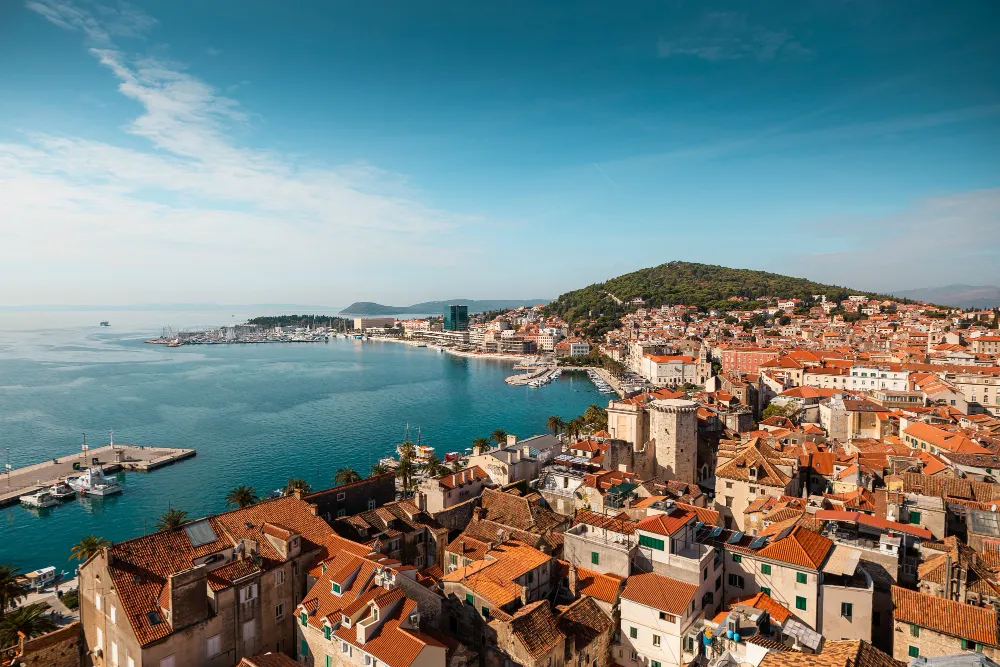
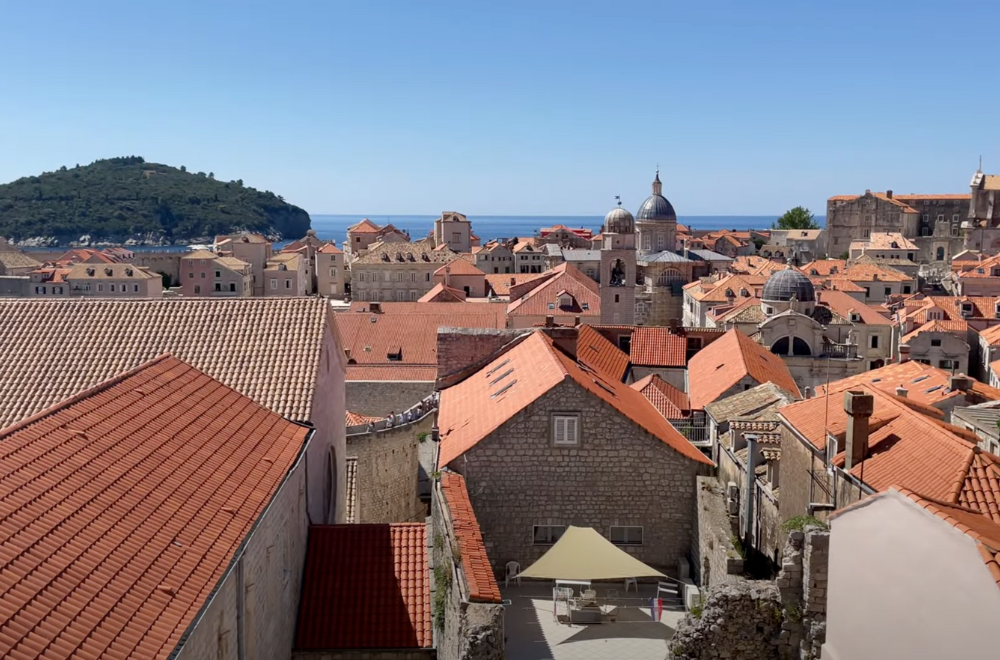
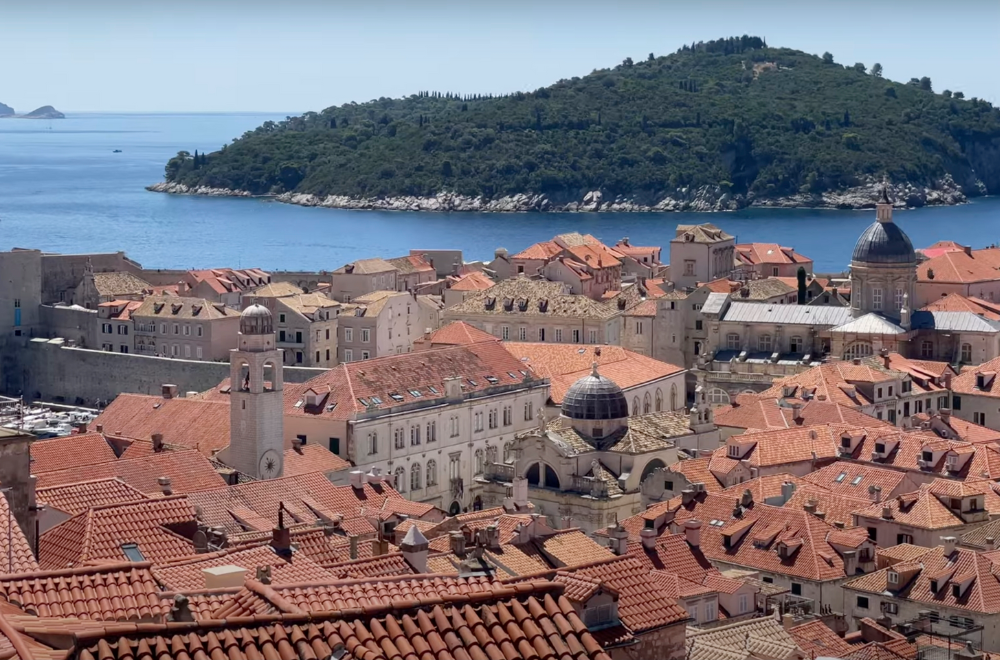
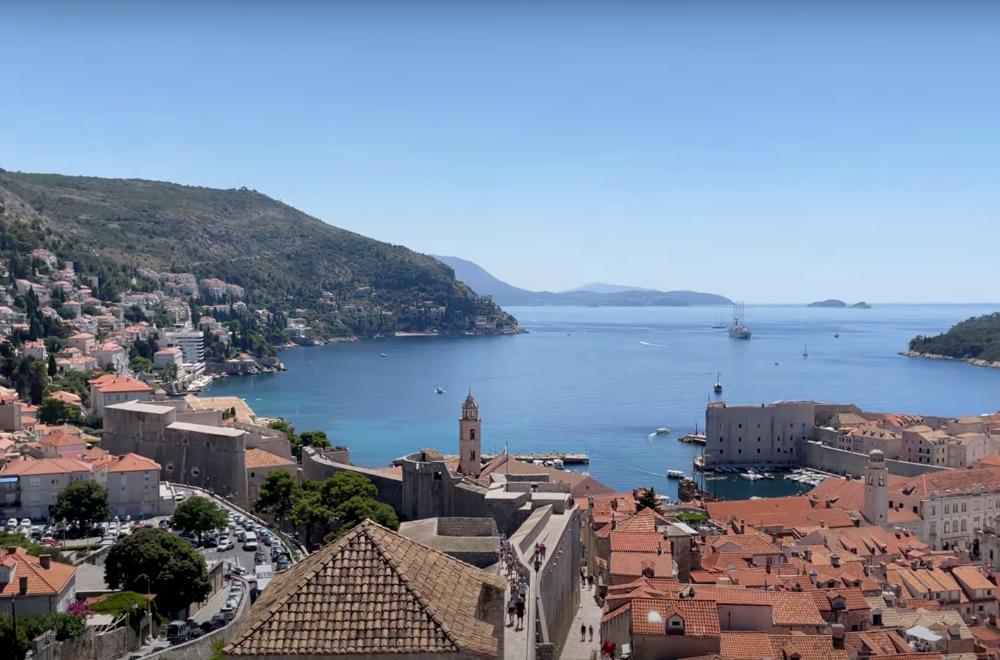
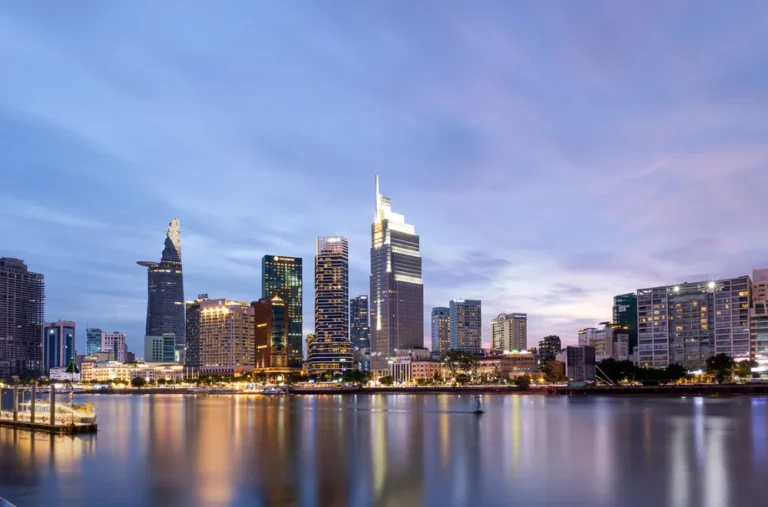


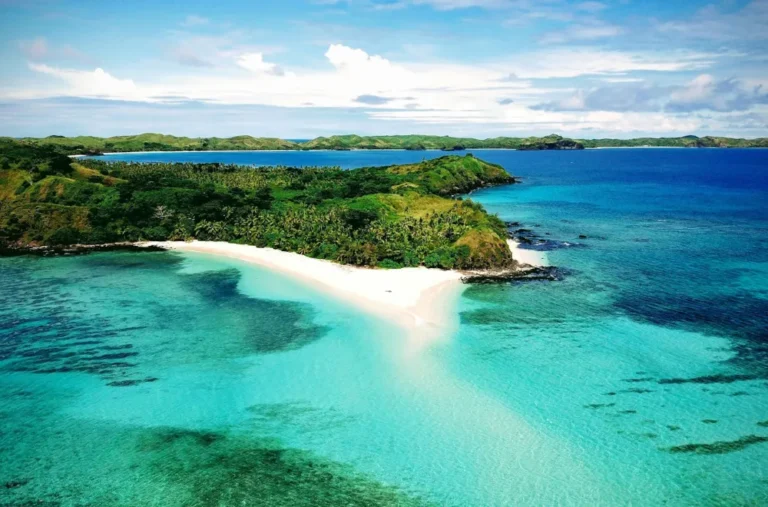




Leave a Reply